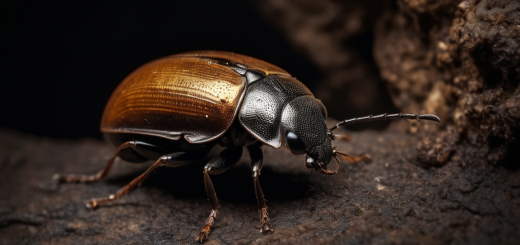The Enigmatic World of Bioluminescent Fungi: A Glimpse into Nature’s Nightlights
Unveiling the Mysteries of Bioluminescent Fungi
Deep within the shadows of the forest, nature has conjured a spectacular display of light. It’s not the stars peeking through the canopy, nor the glow of fireflies darting through the underbrush. This light comes from an unexpected source, a natural phenomenon that seems to blur the lines between fantasy and reality – the bioluminescent fungi. In this article, we dive into the enchanting world of these glow-in-the-dark mushrooms, revealing secrets that continue to fascinate scientists and nature lovers alike.

What is Bioluminescence?
Bioluminescence is the production and emission of light by a living organism. It’s a form of chemiluminescence, where light is produced through a chemical reaction. This mystical process has been recorded in a variety of life forms, such as jellyfish, fireflies, and certain fungi. Amongst them, bioluminescent fungi are particularly intriguing because they illuminate the forest floor with their otherworldly glow.
The Science Behind the Glow
The bioluminescence in fungi is caused by a reaction involving luciferase, an enzyme that acts on the molecule luciferin, causing it to emit light. Factors such as oxygen and the presence of specific ions are critical for this reaction. The light emitted by fungi is generally green to blue-green and is visible to the naked eye in the dark. But why do these organisms glow? There are several theories, including attraction of insects to help with spore dispersal, deterring predators, or simply as a byproduct of metabolic processes.

Discovering Bioluminescent Fungi
More than 80 species of bioluminescent fungi are known, scattered across the globe, often found in subtropical forests. These species belong to the genera Armillaria, Mycena, Omphalotus, and others. Mycena chlorophos is one famous example, primarily found in the subtropical Asian forests. To witness these fungi in the wild is a magical experience that many describe as akin to walking through a scene from a fairy tale.

Bioluminescent Fungi and Their Ecosystems
Bioluminescent fungi play an essential role in their ecosystems. They are saprotrophic, meaning they feed on decaying organic matter, recycling it back into the ecosystem. This process is crucial as it helps in nutrient cycling and maintaining soil health. The light from these fungi also attracts a variety of insects, which can lead to pollination or help spread spores, contributing to the proliferation of the fungi.
Bioluminescent Fungi in Culture and Research
These glowing fungi have not only captured the public’s imagination, but they also hold potential in scientific research. Studies on fungal bioluminescence could lead to breakthroughs in understanding cellular processes, developing new bio-imaging techniques, and maybe even inspiring innovation in sustainable lighting. Additionally, their alluring appeal has made them a popular subject in photography and eco-tourism, drawing attention to the preservation of their native habitats.

Conclusion: A Luminous Call to Action
Bioluminescent fungi, with their ethereal beauty and ecological significance, remind us of the wonders hidden in nature’s depths. The study of these organisms could shed light on numerous scientific mysteries. Yet, their existence is threatened by habitat destruction and climate change. By learning about these organisms and recognizing their value, we can foster conservation efforts to protect the environment, which is the first step towards ensuring that the forest’s natural nightlights don’t go dark.
Embark on a journey into the heart of the forest and let the glow of bioluminescent fungi illuminate your path to a deeper appreciation of our planet’s marvels.






